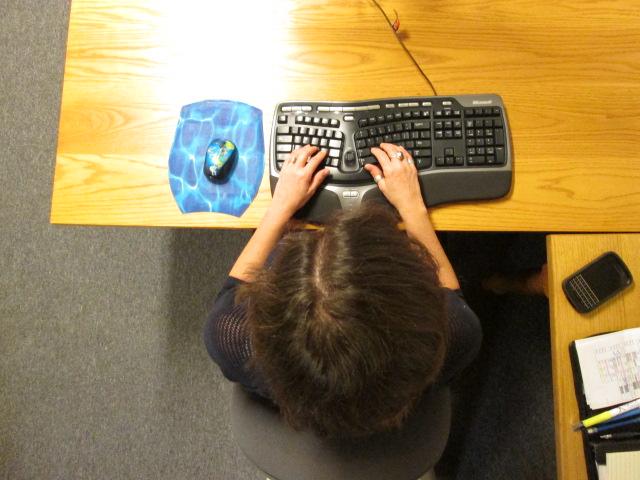Are you still mousing with your right hand? If so, you must read further. When you walk through an office, you will find most mice located on the right hand side of the keyboards. This is the traditional “default”, because we thought that we needed dexterity to operate a mouse. Not true.
Here are three strong arguments for left-hand mousing, particularly if you are a right-handed person.
- Your left hand needs more to do. People who are right-handed tend to do almost everything with the right hand; mousing with the left hand provides an opportunity to more evenly distribute some of that workload between both hands.
- The left mouse is closer to the center of your keyboard. Mousing on the right side of the keyboard actually requires you to reach further to the mouse than if it were located on the left hand side. The extra reach is due to the number pad on the right hand side of the keyboard. Because you sit centered in front of the letters, keeping the mouse on the left allows a much more relaxed shoulder posture, as shown in the photo above. Left hand mousing has also been found to improve wrist postures (Delisle, 2004).
- Better use of desk space. If you keep your notepad or phone between the keyboard and the mouse, the reach to a right mouse is even worse! Mousing with your left hand frees up the space to the right hand side of the keyboard for writing or mobile devices.
Before ‘jumping in with both hands’, consider these tips to help you make the transition to left-handed mousing.
- Find a left-friendly mouse. Ensure that your mouse is a ‘neutral’ design (not meant for the right hand) to allow use with either hand.
- Give it a fair trial. Switching to a left mouse can be awkward; you should commit to a one week trial, preferably at a time that does not include deadlines or high pressure tasks.
- Make it a left-mouse. Modify your mouse buttons for left-handed use. (This is done through the Windows ‘Start’ panel under Settings → Control Panel → Mouse → Buttons.) This change ensures that you are still using your index finger to perform regular “click” functions. Your brain will learn to left-mouse much quicker this way, and you’ll avoid the tendency to twist your hand to use your left index finger for both buttons.
- Slow down the pace. You may also wish to slow down the speed of the mouse, so that it doesn’t jump across the screen faster than your left hand can chase it!
We estimate that more than half of the employees we do office ergo assessments for adopt left-mousing successfully, sometimes within minutes. However, others are so right-hand-dominant that they can’t even hold a coffee mug with their left hand – they may have a harder time. And some jobs really do require dexterity – precise cursor movements on detailed drawings, for example, are harder to control with the non-dominant hand.
Happy mousing!!
Join us on February 7 for our one-day office ergo workshop, where you will learn many more tips, as well as how to complete an assessment of an employee’s office. The course includes tips on introducing sit-stand workstations, and on accommodating new technology (tablets, mobile devices, multiple screens). We’ve also reviewed the recently released CSA Z412-17 to ensure that our training agrees with the updated Office Ergonomic Standard.


